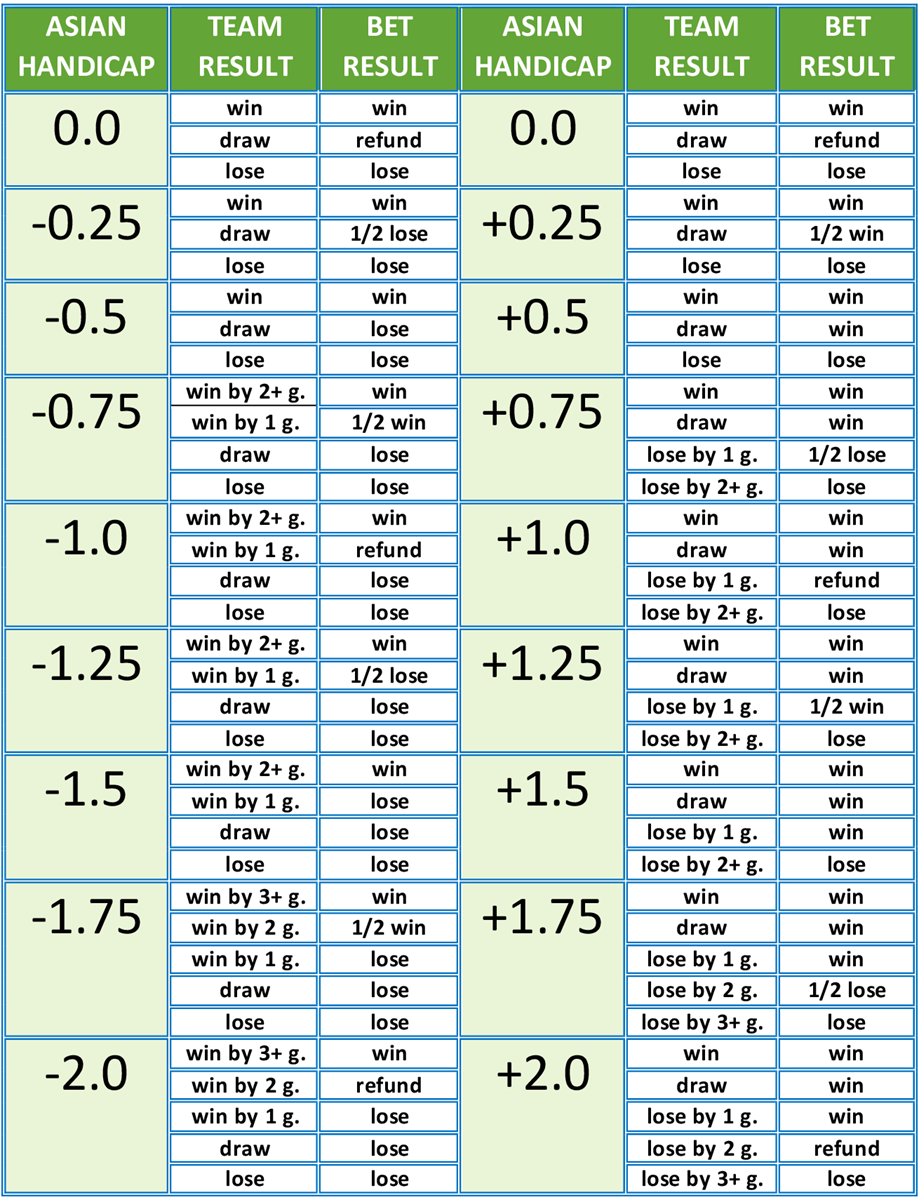Asian handicaps are one of the many ways that soccer bettors have available to place wagers. Although most markets have this alternative available and make it “easy to understand,” they require a more extensive explanation as it isn’t as uncomplicated as they try to make it appear.

Here we explain what the concept is and how does it work for soccer bettors.
Essentially, an Asian handicap provides a structure in which a particular team is "handicapped." This concept relies on the said framework's form and its current opponent.
For instance, if you place a bet on a particular team, they must win over one goal for you to win your wager. The sportsbook typically sets handicaps. Once it is established, the market begins its activity, and the prices will start varying if the wagers perceive that something's wrong with the handicap.
Additionally, Asian handicaps are also meant to remove draws.
Several Asian countries use this betting method, and in those places, they call it “hang cheng.” Although the concept has existed for many years now, it wasn’t until about three decades ago that Europe and America started using it.
In 1998, a person from Indonesia contacted Joe Saumarez Smith, a British journalist. That person asked the journalist to translate the “hang cheng” term for them, and Smith thought that the best option was Asian Handicap. Since then, this term has been used to refer to that particular technique.
Although the term originated in Asia, it is widely used in most markets nowadays. The handicap system was more popular in the Far East.
There are pros to this system, but not all punters are aware of what the concept is about, and therefore, there may be confusion. If you're interested in betting on soccer, you should be familiar with everything about the Asian Handicap method.
There are multiple types of handicaps, but two of the most prevalent are half-point and full-point handicaps.
For example, by backing a particular team at -1.5 goals, then you are guaranteed to win if that team wins by two goals or even more. However, if the team wins by less than that margin, or a draw occurs, or the team loses, you will lose the bet.
Full-point handicaps are more versatile. They provide the wager with “void bets” possibilities.
For example, by backing a particular team at -1 goal, if they win at 1-0, the vet will be "void," and your stake will be returned. If the difference between scores is more than two points, you'll win automatically. However, if a draw or a defeat occurs, you'll lose the bet.
Quarter-point handicaps are more complicated than the previous options. Most markets can have either two or three options available, which is why you need to understand what quarter-point handicaps are.
Sometimes, leagues do not have a "favorite" team. Therefore, a quarter-point market will be available. When this happens, half of the total bet will be staked based on the value of the quarter-point below the established price. What's left of your bet will be placed based on the quarter-point's value above the established price.
This concept may be complicated, but it’s hugely important is it is one of the most common ways of betting in soccer.
Essentially, this is all you need to know about Asian handicaps.
This concept was conceived to “erase” the possibility of a draw during a match. Therefore, the game is left with only two possible results.
In some markets, the handicap types explained above are known as “half goal” and “whole goal.” These terms may seem different, but they work the same.
Whenever you bet on an Asian handicap, draws are not taken into account. You will only have two options to bet in most markets, although sometimes, they may have the third option –quarter-point handicaps- available.
Most sportsbooks won't give a proper explanation about handicaps, but the content found in this article should be enough for you to comprehend what the concept is about and how you can make it work positively.
Back